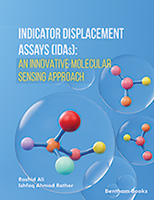FOREWORD 1:
"Water, Water, Everywhere" begins a famous quatrain by the English poet Samuel Taylor Coleridge. Indeed, there is no chemical compound more ubiquitous or more crucial to all aspects of life on Earth. Most familiar is water in its liquid form, a material that is a near-universal solvent. Sea water, a solution of inorganic salts in water, represents more than 95% of the water on the surface of the planet. While water molecules are essential to life, many aspects of their involvement in biological structures and processes are not fully understood.
Formed from a single oxygen atom and two hydrogens, the physical and chemical properties of water are often anomalous if the hydrogen compounds of the elements surrounding oxygen in the periodic table are considered. For example, water (H2O) is a liquid at room temperature and atmospheric pressure while the compounds NH3, HF and H2S are gases under the same conditions. The anomalous properties of water result from intermolecular dipolar and hydrogen-bonded interactions that are peculiarly potent in pure water and account for this liquid's ability to function so effectively as a solvent. The same types of interactions often lead to water molecules being found within organized three-dimensional structures of living and inanimate materials where they have specific structural roles that go beyond those of a mere solvent.
Many experimental methods have been applied to the study of water as a solvent or as a part of an assembled structure. Given that water contains hydrogen atoms with their spin ½ nuclei, it is no surprise that proton nuclear magnetic resonance (1H NMR) has been at the forefront of efforts to understand the chemistry of water wherever it is found. Proton NMR can provide information about the stability of organized structures and indications of the time rate(s) of change of these. Such changes might include rearrangement of three-dimensional aspects (such as conformational motions) or change in relative positions through rotational and translational diffusion.
In this volume, Dr. Rodin presents results from his laboratory and those of others that exemplify information that can be obtained about water molecules contained within organized but non-crystalline materials using proton NMR. These efforts appropriately have employed various relaxation, multiple quantum filtered, translational diffusion and imaging experiments. The systems examined range from synthetic (polyacrylates) and natural polymers (collagen and silk) to intact wood and inorganic cements. These reports nicely demonstrate to the reader the current state of the art in applying these powerful NMR experiments to the systems mentioned.
J. T. Gerig, Professor Emeritus
University of California
Santa Barbara
USA
FOREWORD 2:
Nuclear Magnetic Resonance (NMR) is an indispensable technique for investigating the structure, functionality and dynamics of molecules. It is used widely in physics, chemistry, biology, medicine and other sciences. In this book, Dr. Victor Rodin describes NMR experiments and techniques for consideration and discussion. This book is a great addition to the analysis of NMR methods which Dr. Victor Rodin applied in studying the translational dynamics of molecules in porous and heterogeneous systems: synthetic polymers and materials, collagens and natural silk, and wood and cement pastes.
Dr. Rodin graduated from the Moscow Institute of Physics and Technology (MIPT-State University), Faculty of Molecular & Chemical Physics. He received a PhD in Biophysics (with specialization in Mathematics & Physics) at the Research Institute of Biophysics (Russian Academy of Sciences). He also earned a PhD in Macromolecular and Colloid Chemistry at the Department of Chemistry of Moscow State University. He has worked in excellent NMR research centers, including the University of California, Santa Barbara, USA; the University of East Anglia; the University of Bristol; the University of Surrey, UK; INRA, Clermont-Ferrand, France; Johannes Kepler University of Linz, Austria. Dr. Rodin has published more than 60 publications in peer-reviewed scientific journals and delivered approximately 70 presentations at international scientific meetings and conferences. He has been a member of the Research Council on Colloid Chemistry at Moscow State University, and a member of the International Society of Magnetic Resonance in Medicine, USA. He has refereed papers for scientific journals including Colloid Journal, Material Science, Polymer, Food Chemistry, and a special issue of Magnetic Resonance in Porous Media.
Dr. Rodin has considerable experience in the development of different magnetic resonance methods, including new methodologies. His research experience focuses on the development and application of MR methods and analysis to study solutions and heterogeneous materials, including biomaterials and drugs, blood and microbiological suspensions, polymer solutions, gels and films, xenon gas clathrate hydrates, collagen tissues, natural silk, skin, wood, cement etc. He has taught in many universities. Based on his research results he has delivered lectures to students in physics, physical chemistry, mathematics, natural biopolymers and synthetic materials.
Dr. Rodin illustrates the current state of numerous special NMR experiments applied to porous heterogeneous materials. Readers with an interest in NMR will find useful information in this volume. Potential roles of NMR to future applications are also discussed. The examples are taken from real research results. Problems and solutions are also considered.
Syed F. Akber, PhD, DABR
Radiological Physicist
Cleveland/ Lorain, OHIO
USA
FOREWORD 3:
NMR has been used extensively to estimate the amount of water as well as water self-diffusion in porous natural as well as man-made polymeric materials. It is well known that water is not simply a medium in which biomolecules happen to exist, interact and carry out their functions. Almost every aspect of biomolecular chemistry and physics is influenced by the properties of the liquid milieu. The changes in hydration dynamics of biomolecules upon interaction with other molecules are critical for its functional applications such as for tissue engineering. The author himself is very well versed in understanding hydration dynamics of macromolecules especially silk and collagen, the widely used biomaterials in tissue engineering. Dr. V.V. Rodin’s experience in understanding water diffusivity with other polymeric materials viz., wood and acrylic polymers is also immense. Materials used in cement industry are within his research as well.
The book starts with the basic understanding of NMR principles and concentrates on the description of NMR relaxation and diffusion experiments to understand dynamic properties of bound water in natural polymers and explains in detail the theory behind how such experiments work. The 2D diffusion-diffusion correlation NMR spectroscopy needed to study diffusion anisotropy in wood is introduced step by step, with the emphasis on obtaining a good understanding of how the experiments actually work. Water-polymer interactions and self-diffusion of water in polymer films studied using NMR are also detailed vividly.
Biophysicists and polymer chemists who read this book will be rewarded with fundamental understanding of number of NMR methodologies in studying different heterogeneous materials at a level that will allow them to make use of this versatile spectroscopic method for investigating water dynamics of natural proteins, synthetic polymers and other porous heterogeneous materials.
N. Nishad Fathima
Principal Scientist, PhD
CSIR-Central Leather Research Institute
India
FOREWORD 4:
This is a book about studies of water motion by the author and his collaborators for a number of natural polymers, such as wood and silk, for the synthetic polymers, and for some cement pastes. Various advanced NMR relaxation and diffusion measurements were performed. These include T1-T2 cross correlation relaxation and diffusion-diffusion correlation spectroscopy with parallel and perpendicular pulsed field gradients. A measurement of self diffusion of a polymer itself is also made.
Victor Rodin, working in magnetic resonance methods at the University of Linz, at Linz, Austria, has had a life long professional interest in the physical properties of natural and synthetic polymers, including collagen, wood, and mineral type materials, especially in regard to the static and dynamic properties of water associated with these materials. Studies have also included water bound in clathrates.
Dr. Rodin has authored or co-authored over 60 articles in English and Russian journals, including a chapter in the 2017 Encyclopedia of Physical Organic Chemistry.
Hopefully, readers with different backgrounds in physics, chemistry, and biology will acquire much useful information from these studies of water-macromolecule and pore-water interactions in organized structures. Not only is the information about the systems themselves of value; but the methods used to acquire the information can be applied to many other systems.
John E. Tanner, Jr., PhD
USA





